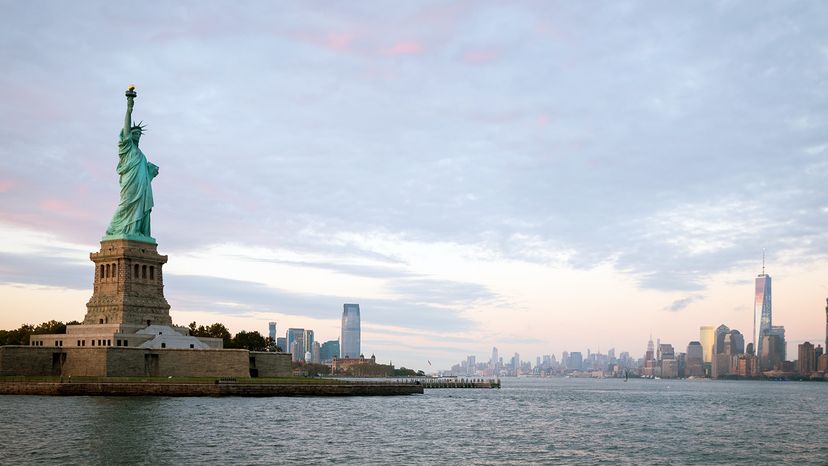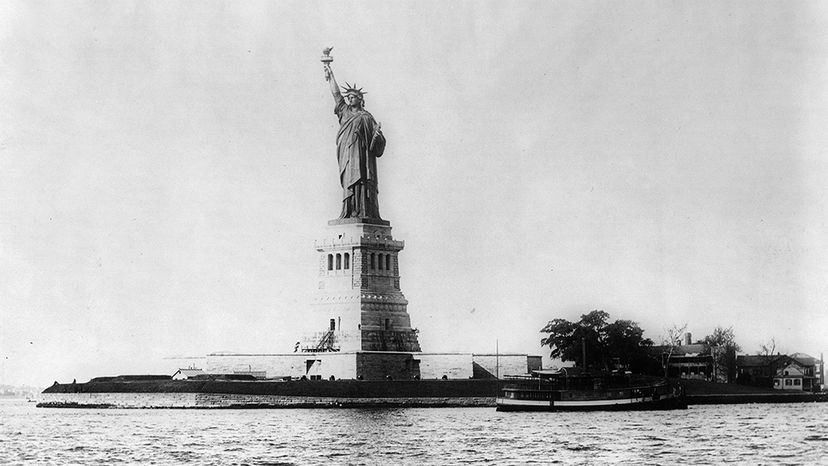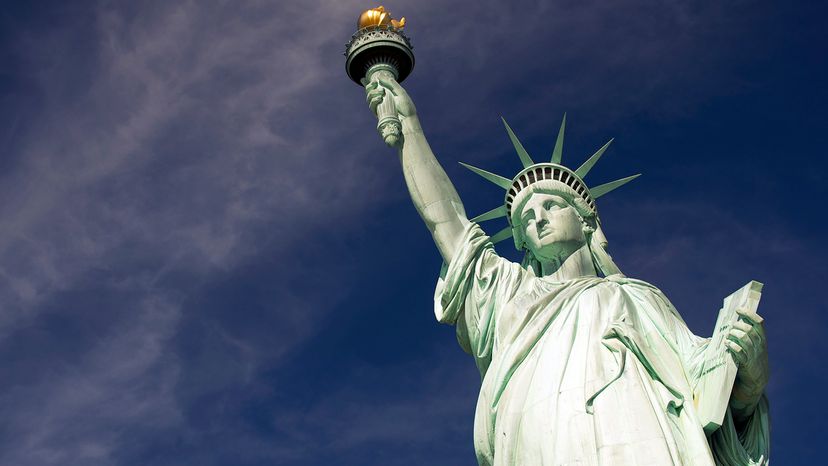While the Statue of Liberty emerged from a desire to represent an alliance between America and France, its core meaning is a mutual desire for freedom — liberty for all people all over the world. It's no accident that the Statue of Liberty was placed to face southeast. From that vantage point, she makes a perfect welcoming symbol for visitors and immigrants from her home on Liberty Island.
The seven-pointed crown on her head symbolizes the seven continents and seven seas, and the broken shackles at her feet represent freedom from oppression. Lady Liberty possesses a few other symbols as well. She's holding a tablet in her left hand inscribed with the date July 4, 1776 (the date of American independence) written in Roman numerals (July IV MDCCLXXVI). And that giant torch in her right hand? It's meant to represent enlightenment — a fitting accessory for Liberty Enlightening the World.
As for the Lazarus poem, some history experts like Robert J. McNamara believe while Bartholdi had originally envisioned Lady Liberty as a symbol of America exuding its own freedom, "The New Colossus" represented America as a refuge for oppressed people seeking liberty.
"Lazarus was no doubt thinking of the Jewish refugees from Russia she had been volunteering to assist at Ward's Island," McNamara wrote in ThoughtCo. regarding the poet's volunteer work to help new arrivals. "And she surely understood that had she been born somewhere else, she may have faced oppression and suffering herself."
While there may be countless interpretations, dissections and misreadings of Lady Liberty's many meanings, one thing's for sure: She has indeed served as America's one-woman welcome committee for well over a century. When the U.S. government opened a federal immigration station on Ellis Island in 1892, about 12 million immigrants were eventually processed there before receiving permission to enter the country — all of whom were greeted by the sight of the Statue of Liberty nearby.
Today, the Statue of Liberty remains a major attraction for citizens and visitors from all over the world — approximately 4.5 million people make the pilgrimage to see her each year. One of the most popular attractions is climbing up to her crown, which has 25 windows overlooking New York City and the harbor. It's a strenuous climb up a tight spiral staircase, but visitors are rewarded with panoramic views of Brooklyn, as well as Gustave's original supporting iron-and-steel framework.


